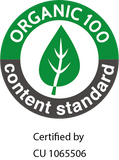
Lucie Krell
Relaxation educator, mother and currently training to become a maternity nurse
The first weeks after birth: A special time
Many couples long for a pregnancy and imagine what the birth and everyday family life will be like. But what does the time immediately after birth actually look like? What does "Postpartum care" and what changes does a woman's body go through? All these questions will be answered in this article.
Table of contents
- The first weeks after birth: A special time
- Transition phase from birth to postpartum
- Physical changes in the mother during the postpartum period
- The newborn: The first moments after birth
- Parent-child bond: The foundation for a healthy relationship
- Challenges in the postpartum period: Everything is new
- 5 tips for a restful postpartum period
- Postpartum care:
Support from a maternity nurse - Conclusion: Start your family life well prepared

Transition phase from birth to postpartum
A birth is only completely completed when the placenta has been expelled after the newborn. At the same time, the so-called postpartum, which is about eight weeks It is divided into the early postpartum period (up to 10 days after delivery) and the late postpartum period. During this period, the midwife supports the mother and accompanies the physical as well as emotional changes after birth.
The uterus contracts immediately after birth and returns to its normal size and position after about six weeks. This phase serves to restore the physical changesthat occurred during pregnancy.
Physical changes in the mother in the puerperium
Hormonal changes
After delivery, many hormones produced by the placenta, such as progesterone, decrease. At the same time, oxytocin, the so-called cuddle hormone, is released in increased amounts. This hormone supports:
-
The afterpains that make the uterus contract faster
-
Reducing the risk of rebleeding
-
The Breastfeedingby promoting milk let-in and milk flow
The Breastfeeding has an important influence on the recovery and supports the Parent-child relationship. Even the first breastfeeding with the breast milk, in which the baby receives the valuable colostrum, is a valuable contribution to strengthening the immune system of the infant.
The newborn: The first moments after birth
After birth The baby is usually placed directly on the mother’s body. Skin contact is essential for heat supply and the BondingDuring this time, the umbilical cord is allowed to pulsate so that as many iron reserves as possible can be passed on and is only then severed.

Medical examinations
- APGAR test¹: Assessment of the overall condition of the newborn
- U1 examination: Checking body length, weight and head circumference
- Vitamin K administration: Prevention of cerebral hemorrhages
Depending on Place of birth Mother and child are either discharged home after a few hours or transferred to the postnatal ward. After a Caesarean section longer medical monitoring is carried out.
Parent-child binding: The foundation for a healthy relationship
Whether at home or in the hospital – the most important thing in this phase is the closeness between parents and baby. Skin contact and Breastfeeding not only strengthen the Parent-child relationship, but also the well-being of the newbornsThe other parent should also actively participate in bonding.
The natural crisis
The Conversion is challenging. Parents must first learn to Signals This process takes time and patience. But be aware: it is a process of getting to know each other, which takes time. It is a natural crisis that represents a change in your lives that you all have to get used to and that you have to Support
You can get as much help as you need. Don't be afraid to ask for support!
Because: “It takes a whole village to raise a child.” (African proverb)
Challenges in the puerperium: Everything is new
The first year of life is full of new experiences for the baby, but also for the parents everything is new. The mother in particular goes through many physical and emotional Changes.
Baby blues and puerperium depression
Through hormonal Fluctuations may occur in the first few days after birth
Mood swings This so-called baby blues is normal, but if persistent depression occurs, it is important to seek medical advice. midwife or a doctor about it in order to Postpartum depression to exclude.
5 tips for a relaxing puerperium
-

Visits should be a relief and not become an obligation.
-

Cuddling with skin contact promotes bonding.
-

Friends and family can help with household chores or food.
-

Take time to grow together as a family.
-

Speak up about your needs in a timely manner.
Postpartum care: Support from a maternity nurse
Single parents can hire a maternity nurse who can provide support in the household, Upbringing of siblings and in organizing everyday life. Under certain circumstances, health insurance covers the costs.
If you would like to know more about postpartum supplies, take a look at our blog post "Babies' First Supplies: What Do You Need?".

What administrative procedures do parents have to complete after the birth?
After birth A child has several important Official procedures to various financial and legal Here are the four most important steps new parents should take:
Intactable content
Apply for a birth certificate at the registry office
The birth certificate is the first official document of the child. It is registry office of the city of birth. For registration, the Birth certificate the clinic or midwife as well as the ID cards of the parents is required. If the parents are not married, the Recognition of paternity also required.
Report child to the health insurance company
Within the first weeks after birth, the child must be health insurance If both parents are legally insured, the Registration usually through the family insurance of one parent. If a parent If you are privately insured, different regulations may apply.
Apply for child benefit
The Child benefit is a financial Support from State and can be used directly after the birth can be applied for. The Application is submitted to the family allowance office of the Federal Employment Agency.
Apply for parental allowance
The Parental allowance supports parents financially during Parental leaveIt is applied for at the responsible parental allowance office and is based on the parents' income before the birth. Application should be submitted as early as possible, as processing can take several weeks.
Additional administrative procedures for unmarried parents
If the parents are not married, two further formalities must be completed:
Intactable content
Paternity recognition
The father must fatherhood officially recognize so that he legally is considered the father. This can be done at the registry office, youth welfare office, or notary public.
Declaration of custody
If both parents have the common Custody If they wish to do so, they must submit a corresponding declaration to the Youth Welfare Office.
Early registration in daycare or crèche
Even if it is not a compulsory, registration in a daycare center or crèche makes sense at an early stage. There are often long waiting lists in cities. If you want to accommodate your child at a certain point in time, you should take care of a place early.
With this checklist, parents keep an overview of the important authorities after birth. This ensures that all applications are made on time and that all support services such as maternity leave, parental allowance and child benefit are requested in good time.
Conclusion: Start well prepared in family life
The postpartum period is a time of change, arrival, and learning. With the right Initial equipment, support and patience Parents can use this special phase Experience and enjoy consciously. What's most important to you? Share your thoughts, make a list, and communicate your needs – this is how you can have a relaxed start to family life!
Good luck and joy as new parents!
Suitable products for your little ones
-
Peak cap with neck protection
Normal price 19,99 €Normal priceUnit price per19,99 €Sales price 19,99 €
Sources:
¹ https://flexikon.doccheck.com/de/Apgar-Score
















